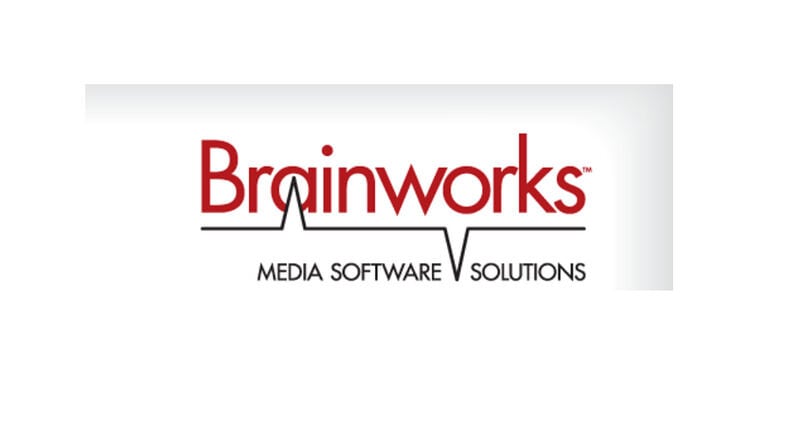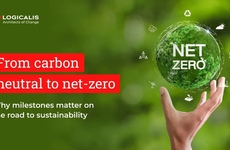Matt Griffith and Nicole Zuccaro from Brainworks Software
Mishal Omar — March 10, 2017 — Business
Brainworks Software is a company with a focus on maximizing revenue and interest in modern media companies. Trend Hunter recently spoke to the company's Director of Sales and Marketing Matt Griffith, as well as its Marketing Communications Specialist Nicole Zuccaro to talk about what the brand hopes to do in the future to create a culture of creativity.
How does your team generate great ideas?
Matt: We have a heavily customer-drive innovation process, so we frequently talk to our existing and potential customers about changes in our industry and how our software can better serve their needs. We take all of that information, it’s a pretty rigid process, gather that information and that’s really what determines our software development pipeline.
What are some barriers to innovation and how do you get around them?
Matt: Because the media industry is changing so rapidly, it's definitely a challenged industry. Really trying to figure out what this industry is going to look like six months, a year, two years from now is really the most challenging part. Then of course, we’ve got employees here that have been with the company for several years, so getting them to adapt to new ideas, new thinking and new paths for our products is sometimes somewhat challenging.
From an employee perspective, we’ve been working with them to better embrace innovation and new thinking on a one-on-one basis. It’s been working well but it’s kind of one of the reasons we want to go to Future Festival. To see if we can find additional ideas in that area.
How do you identity trends, and what resources does your team use to spot trends and insights?
Matt: It’s a couple different things, it’s a lot of discussions with our current customers and prospects. Then of course, we work with other software partners and discuss what’s happening with them, we go to a lot of these trade shows as Nicole mentioned, so we can stay on top of our industry and where things are going.
Has there ever been an instance where another industry has influenced an innovation at your company?
We often look at other challenged industries, other industries that are going through similar challenges. Even though it’s not exactly related to what we do. For instance, we look at the movie rental business. Before that was the way consumers got movies after release, now because of digital movies on demand it’s very rare that people rent movies, which caused a collapse of Blockbuster and all those other video-related brick and mortar chains. We kind of look at them as “why didn’t they evolve,” and recognize that a change was coming, and what could we be doing differently to avoid being in the same position that they’re in.
What are some things you can do to create a culture of innovation?
Matt: When it comes to innovation, sales and marketing are on the forefront of what’s happening with our customers, and as I mentioned we’re customer-driven innovation. Ultimately that innovation needs to get to our developers so we can build the software appropriately. It’s one of the things that we find that sometimes is a vacuum. Development will be off working on something that they think is cool, but it doesn’t really have a lot of correlation to what our customers need or the way trends are going. So we definitely want to find a way to better bridge that gap between development and sales and marketing, where we’re kind of hearing about the innovation, and then actually making it happen.
What's the most unconventional thing you have done to get creative inspiration?
Nicole: What comes to mind is the heart health smoothie idea that we did at our trade show two weeks ago. I basically was trying to drive traffic to our booth, and I had never been to one of our trade shows in this industry, so it was a lot of crossing your fingers and hoping that they would take to the idea – which was heart healthy smoothies because it was heart awareness month. So I tied that into heart healthy smoothies and it ended up being a really big hit at the show. That’s the only thing I could say that was outside the box, it had nothing to do with our industry, something that was a little bit different.
How does your team generate great ideas?
Matt: We have a heavily customer-drive innovation process, so we frequently talk to our existing and potential customers about changes in our industry and how our software can better serve their needs. We take all of that information, it’s a pretty rigid process, gather that information and that’s really what determines our software development pipeline.
What are some barriers to innovation and how do you get around them?
Matt: Because the media industry is changing so rapidly, it's definitely a challenged industry. Really trying to figure out what this industry is going to look like six months, a year, two years from now is really the most challenging part. Then of course, we’ve got employees here that have been with the company for several years, so getting them to adapt to new ideas, new thinking and new paths for our products is sometimes somewhat challenging.
From an employee perspective, we’ve been working with them to better embrace innovation and new thinking on a one-on-one basis. It’s been working well but it’s kind of one of the reasons we want to go to Future Festival. To see if we can find additional ideas in that area.
How do you identity trends, and what resources does your team use to spot trends and insights?
Matt: It’s a couple different things, it’s a lot of discussions with our current customers and prospects. Then of course, we work with other software partners and discuss what’s happening with them, we go to a lot of these trade shows as Nicole mentioned, so we can stay on top of our industry and where things are going.
Has there ever been an instance where another industry has influenced an innovation at your company?
We often look at other challenged industries, other industries that are going through similar challenges. Even though it’s not exactly related to what we do. For instance, we look at the movie rental business. Before that was the way consumers got movies after release, now because of digital movies on demand it’s very rare that people rent movies, which caused a collapse of Blockbuster and all those other video-related brick and mortar chains. We kind of look at them as “why didn’t they evolve,” and recognize that a change was coming, and what could we be doing differently to avoid being in the same position that they’re in.
What are some things you can do to create a culture of innovation?
Matt: When it comes to innovation, sales and marketing are on the forefront of what’s happening with our customers, and as I mentioned we’re customer-driven innovation. Ultimately that innovation needs to get to our developers so we can build the software appropriately. It’s one of the things that we find that sometimes is a vacuum. Development will be off working on something that they think is cool, but it doesn’t really have a lot of correlation to what our customers need or the way trends are going. So we definitely want to find a way to better bridge that gap between development and sales and marketing, where we’re kind of hearing about the innovation, and then actually making it happen.
What's the most unconventional thing you have done to get creative inspiration?
Nicole: What comes to mind is the heart health smoothie idea that we did at our trade show two weeks ago. I basically was trying to drive traffic to our booth, and I had never been to one of our trade shows in this industry, so it was a lot of crossing your fingers and hoping that they would take to the idea – which was heart healthy smoothies because it was heart awareness month. So I tied that into heart healthy smoothies and it ended up being a really big hit at the show. That’s the only thing I could say that was outside the box, it had nothing to do with our industry, something that was a little bit different.
Trend Themes
1. Customer-driven Innovation - Embrace a heavily customer-driven innovation process to better serve customer needs and determine software development pipeline.
2. Adapting to Industry Changes - Overcome the challenge of adapting to rapidly changing media industry by encouraging employees to embrace new ideas and new paths for products.
3. Identifying Industry Trends - Engage in discussions with customers, industry partners, and trade shows to stay on top of industry trends and gain insights.
Industry Implications
1. Media and Entertainment - Explore disruptive innovation opportunities in the media and entertainment industry by leveraging customer-driven innovation and adapting to industry changes.
2. Software Development - Bridge the gap between sales and marketing and software development teams to ensure that innovation aligns with customer needs and industry trends in the software development industry.
3. Trade Show and Event Management - Leverage unconventional and out-of-the-box ideas, like the heart healthy smoothie concept, to drive traffic and create a culture of creativity in the trade show and event management industry.
0.7
Score
Popularity
Activity
Freshness






















